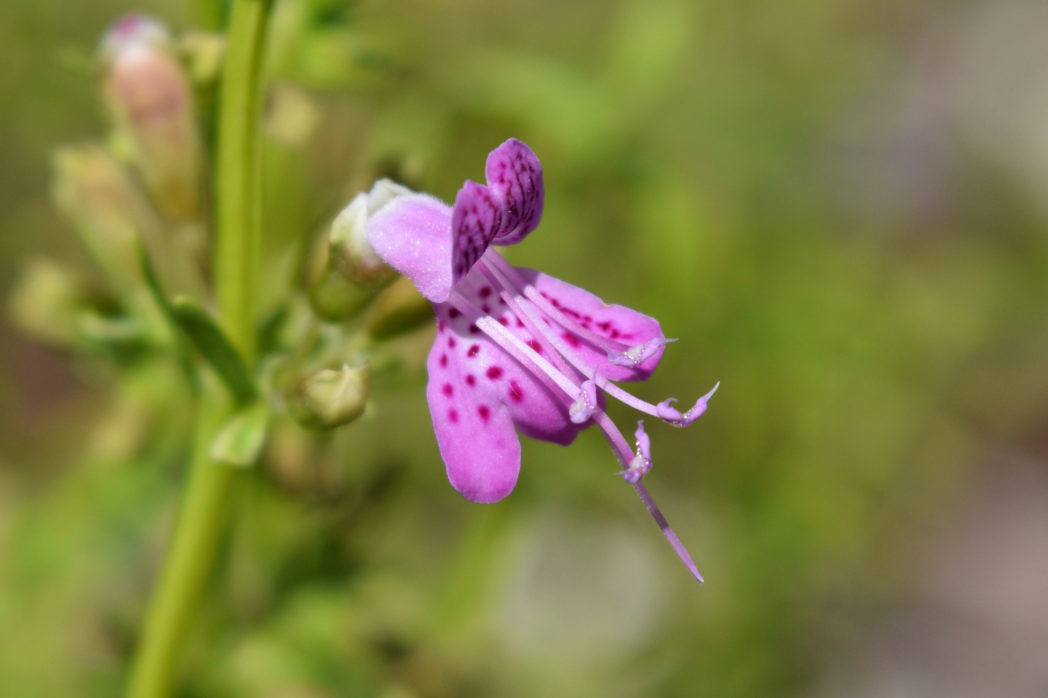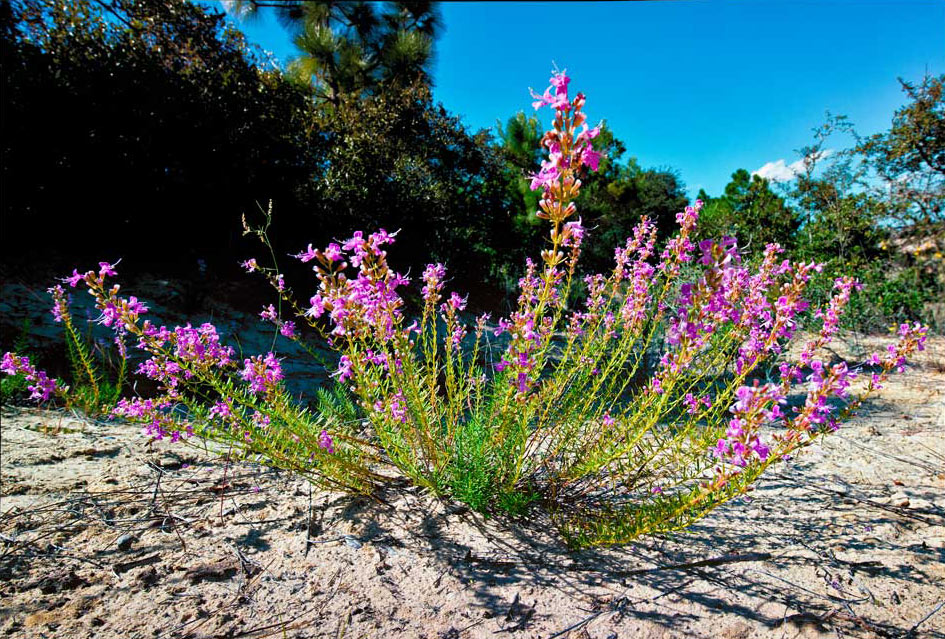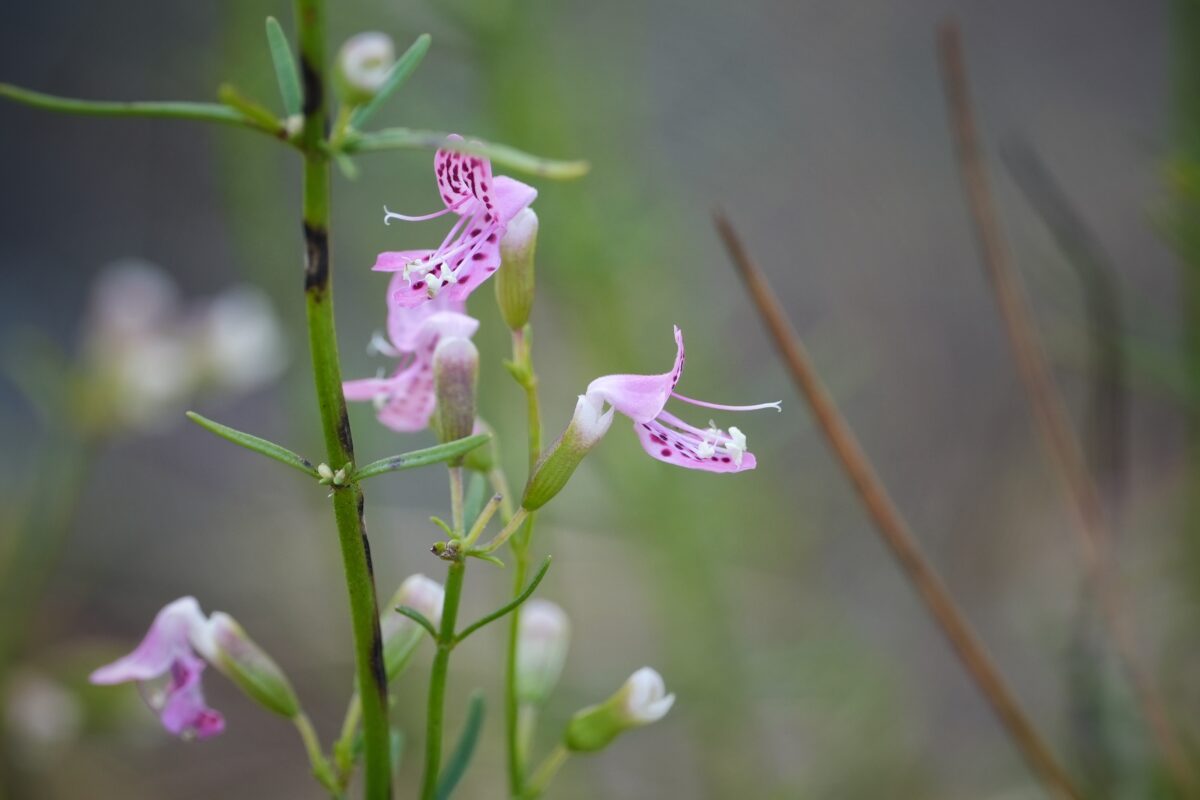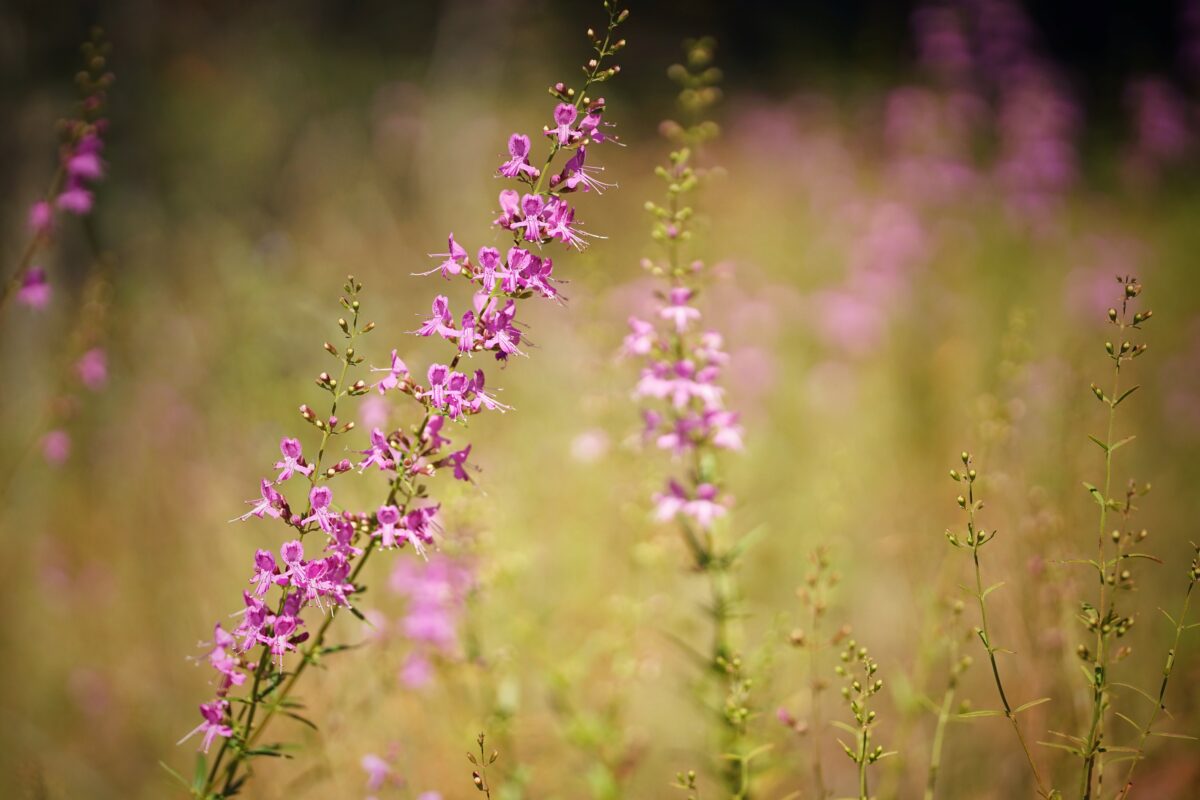Titusville balm
Pictured above: Titusville balm (Dicerandra thinicola) by Adam Arendell (CC BY-NC 2.0). Click on terms for botanical definitions. View post as a PDF.
Titusville balm is a state-listed endangered wildflower endemic to Brevard County where it is restricted to an approximately 30-mile range. It blooms from October through December, attracting mostly small to medium-size bees.
Titusville balm flowers are small (about 3/8” long), two-lipped and bright pink with dark pink stripes and/or spots. They are born in whorls along terminal spikes. Filament, stigma and style are elongated and may be dark or bright pink. Pistils are bright pink and elongated. Leaves are linear, arranged in whorls and emit a minty aroma when crushed. Stems are woody, square and branched.
Although the plants are small, Titusville balm is a prolific bloomer and seeder, especially when exposed to fire. Individual plants typically live only three years, but the abundance of seeds helps ensure the species’ continuance.
Because of its height, Titusville balm is considered suffrutescent, or a subshrub.
The genus Dicerandra is endemic to ancient sandhill habitats in the Southeast US. Of the 10 species currently described, eight are found only in Florida. They are extremely specialized to the site conditions where they grow.
Family: Lamiaceae (Mint family)
Native range: Brevard County
To see where natural populations of Titusville balm have been vouchered, visit florida.plantatlas.usf.edu.
Lifespan: Short-lived perennial
Soil: Dry, well-drained sandy soils
Exposure: Full sun
Growth habit: 12-24″+ tall
Titusville balm is not commercially available. Visit a natural area to see it.
For information on other Dicerandra species, see these resources:




